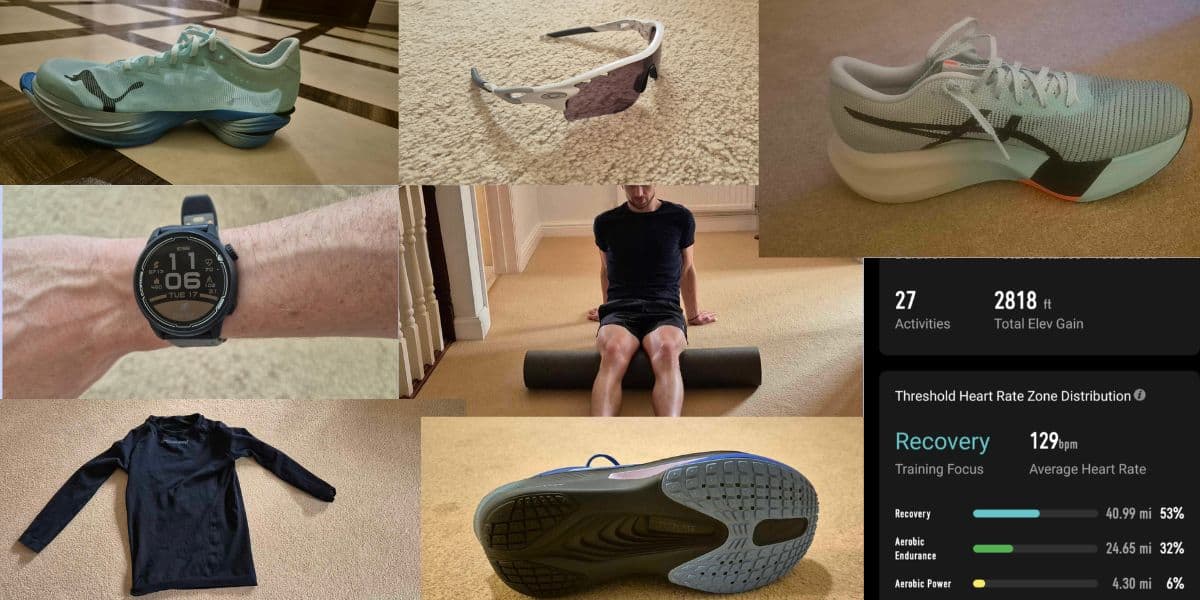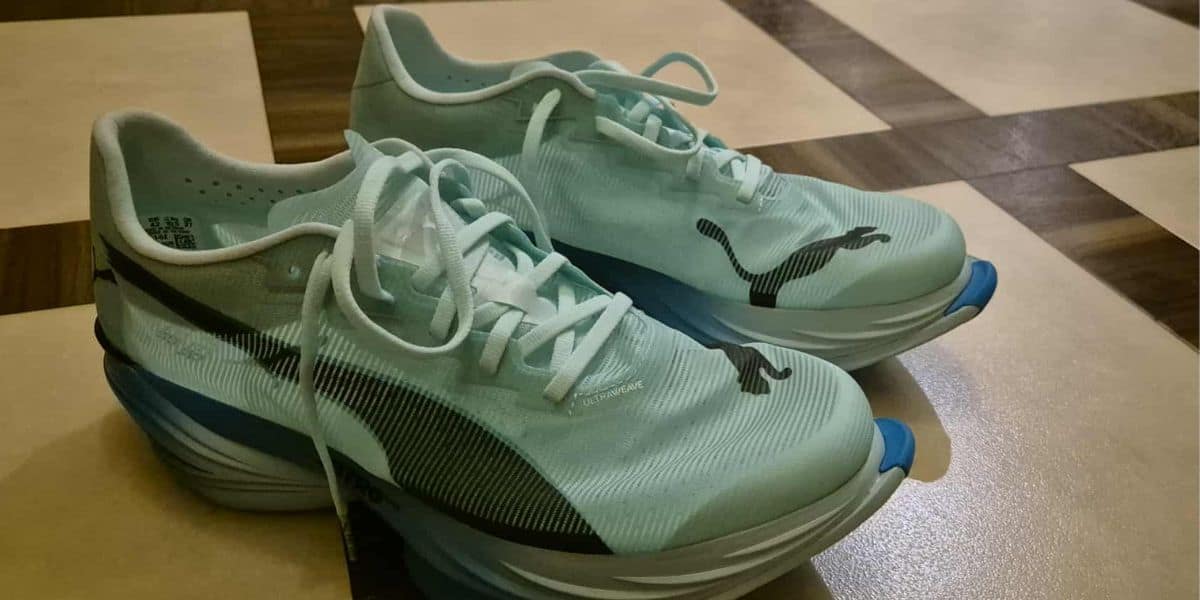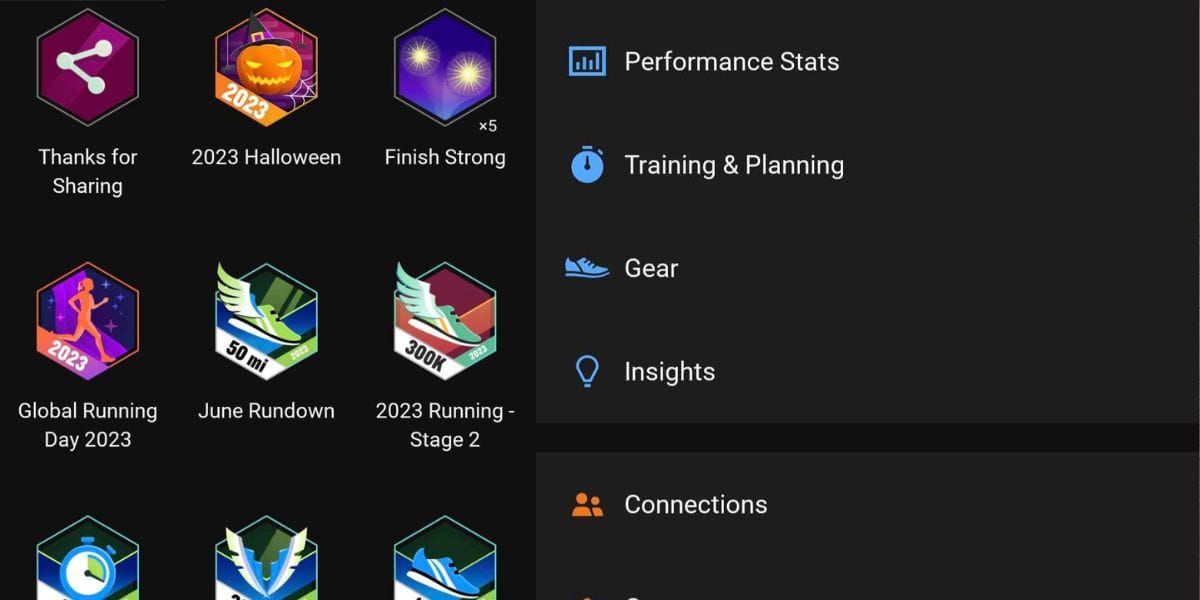Preparing for a marathon involves far more than just logging miles.
Having the right marathon gear can make the difference between achieving your goal time and struggling through 26.2 miles of discomfort.
As a 31-minute 10k runner with years of running experience and a UESCA-certified coach, I've learned through countless training cycles and races that the equipment you choose matters significantly.
The right gear won't run the race for you, but it will help you perform at your best when it counts most.
This post contains affiliate links, and I'll earn a commission if you purchase through them
Why Marathon Gear Matters

Marathon training and racing place unique demands on your body and equipment. Unlike shorter distances, the extended duration means small discomforts become major issues, and marginal gains from optimized gear compound over 26.2 miles.
The right marathon gear helps you:
- Train consistently without injury or unnecessary discomfort
- Monitor your progress and adjust training appropriately
- Maximize performance on race day
- Recover more effectively between sessions
- Stay motivated throughout the demanding training cycle
Let's break down the essential items every marathoner should consider.
Training Shoes
Your training shoes are arguably the most important piece of marathon gear you'll invest in.

The Foundation of Marathon Preparation
You'll spend multiple miles in these shoes during your training cycle, so comfort, durability, and appropriate support are crucial.
Nike Zoom Fly 6
For marathon training, I highly recommend the Nike Zoom Fly 6 as your primary training shoe. It strikes an excellent balance between performance and durability.
What I love most about the Zoom Fly 6 is its versatility. It handles everything from steady runs to tempo sessions and long runs with ease.
The dual-layer midsole construction delivers both responsiveness and cushioning, making it ideal for those marathon-pace long runs where you need to practice race effort. I've found it particularly comfortable the day after hard workouts, which is invaluable during heavy training blocks.
Training Shoe Rotation
While the Zoom Fly 6 can handle most of your training, consider having an additional pair of more cushioned shoes for easy recovery days.
This rotation approach helps extend the life of your shoes and can reduce injury risk by varying the stress patterns on your legs.
Race Day Shoes

Race day shoes deserve special attention.
These are the shoes that will carry you through 26.2 miles when it matters most, and investing in proper racing flats or super shoes can provide tangible performance benefits.
Your Secret Weapon for Personal Best Performance
PUMA Fast-R Nitro Elite 3
For marathon racing in 2025, the PUMA Fast-R Nitro Elite 3 stands out as an exceptional choice. It's among the lightest super shoes available while delivering premium performance characteristics.
What makes this shoe special is its unique combination of bouncy responsiveness with aggressive forward propulsion.
I've raced in the Fast-R Nitro Elite 3 and can confirm it feels race-ready from the first wear, though I recommend doing a couple of short workouts for familiarity before your goal race.
The lightweight construction creates an almost effortless feeling at race pace, and the energy return becomes increasingly valuable as fatigue sets in during the later miles of a marathon.
The shoe's versatility across distances from 5k through marathon makes it a worthwhile addition to any competitive runner's arsenal.
Alternative Race Options
If you're looking at other super shoe options, consider:
- Nike Vaporfly 3 for aggressive forward propulsion
- Nike Alphafly 3 for maximum cushioning
- Asics Metaspeed Edge Paris for cadence-based runners
GPS Running Watch

A quality GPS watch has become essential marathon gear for tracking your training load, monitoring progress, and ensuring you're hitting target paces during workouts and races.
Your Training Partner and Data Hub
Coros Pace 2
After using the Coros Pace 2 as my primary running watch for six months, I can confidently recommend it as it's outstanding value for marathon training. The watch is so light that you'll barely notice it's there during long runs.
The standout feature is battery life up to 30 hours in full GPS mode, which means you'll never worry about it dying mid-marathon or during long training runs. The GPS accuracy is excellent, providing reliable pace and distance data crucial for marathon training.
The Coros app makes it easy to review your training and upload custom workouts, which is particularly useful when following a structured marathon plan.
Premium Alternatives
If budget allows, the Garmin Forerunner 265 or Forerunner 255 offer additional features like onboard music storage and more advanced training metrics, though at a higher price point.
Running Apps

Screen shot from the Garmin App
While your watch handles the data collection, running apps provide the platform for analysis, planning, and motivation throughout your marathon journey.
Digital Coaching and Community Support
Strava
Strava combines powerful tracking with robust community features that keep you motivated during long training cycles. The social feed, kudos system, and segment competitions add an element of fun and accountability to your training.
The training log provides comprehensive statistics and progress tracking, allowing you to see your fitness building week by week. While the free version offers plenty of features, the premium subscription unlocks advanced training analytics that can be valuable for marathon preparation.
Nike Run Club
For guided runs and structured training plans, Nike Run Club is completely free and offers excellent value. The audio coaching during runs provides motivation and pacing guidance, while the customizable training plans can help structure your marathon preparation.
Heart Rate Monitor

While wrist-based heart rate monitoring has improved, a chest strap or arm-based heart rate monitor provides significantly more accurate data during workouts, which is crucial for marathon training.
Precision Training at the Right Intensity
Marathon training requires spending time in specific heart rate zones to build different physiological adaptations.
Easy runs should truly be easy (usually 60-70% of max heart rate), while tempo runs and threshold work require more precise intensity monitoring.
Recommended Options:
- Garmin HRM-Pro or HRM-Dual for chest-based monitoring
- Coros Band - My personal selection.
I've found that wrist-based heart rate can lag or show inaccurate readings during intervals and tempo work, making a dedicated heart rate strap worthwhile for serious marathon training.
Running Nutrition

As your long runs extend beyond 90 minutes during marathon training, carrying hydration and nutrition becomes important.
Staying Fueled on Long Runs
A well-fitted running vest allows you to practice your race-day fueling strategy.
What to Look For:
- Minimal bounce and chafing during extended runs
- Sufficient storage for water bottles, gels, and a phone
- Easy access to pockets while running
- Breathable materials that don't trap heat
- Adjustable fit that works with different clothing layers
Popular options include the Salomon Advanced Skin series and various models from Nathan and Ultimate Direction.
The key is finding one that fits your torso well and doesn't cause any rubbing during long efforts.
Energy Products
Energy gels, bars, and drinks can all give you the required boost to help fuel you to your marathon finish.
It's something worth practicing and dialing in your fueling strategy in advance of race day.
Not only will you be better prepared, but I have found that using energy gels on my long run allows me to recover better for the week ahead.
For a natural alternative to gels, I've been testing One Good Thing bars - completely wrapper-free energy bars with an edible beeswax coating.
They're ideal for long runs when you want real food rather than another gel, and the zero-waste design means no pockets full of wrappers.
The oat-based bars provide sustained energy without sitting heavy, and all five flavours (my favourites are Honeycomb and Lemon Drizzle) taste genuinely good mile after mile. [Get 10% off your first order here]
Technical Running Socks

Never underestimate the importance of quality running socks for marathon training. Blisters can derail training weeks before race day, and the right socks provide a crucial barrier between your feet and shoes.
Small Investment, Big Impact
Essential Features:
- Moisture-wicking materials to keep feet dry
- Seamless toe construction to prevent rubbing
- Targeted cushioning in high-impact areas
- Compression elements for improved circulation
- Blister-resistant fabrics
Running Apparel
Comfort for Training and Racing
Shorts or Tights
Choose running-specific bottoms with moisture-wicking fabrics and minimal seams.
For marathon training through different seasons, having both shorts and tights options is essential. Look for designs with secure pockets for gels and keys.
Tops
Technical running shirts are a must. Avoid cotton entirely—it retains moisture and can cause significant chafing over marathon distances. Invest in several technical tees or singlets that you can rotate through training.
Recovery Tools

Marathon training is demanding, and proper recovery tools help you show up ready for each key workout.
Maximizing Adaptation Between Sessions
Foam Roller
A quality foam roller helps release muscle tension and improve mobility. Spending 10-15 minutes rolling after runs can significantly improve recovery and reduce injury risk.
Massage Gun
Percussion massage devices provide targeted relief to tight muscles and can be particularly helpful for addressing specific problem areas during heavy training.
Compression Gear
Compression socks or tights may aid recovery between sessions, though evidence is mixed. Many runners find them helpful for long travel to races or recovery from particularly demanding workouts.
Race Day Essentials
Don't Forget These on Marathon Morning
Body Glide or Anti-Chafe Products
Apply liberally to any areas prone to chafing—nipples, inner thighs, underarms, and between toes. This small step prevents painful problems that can ruin your race.
Race Belt
A race number belt allows you to attach your bib without pins and makes it easy to access if you need to adjust layers.
Throw-Away Clothes
Old clothes you can discard at the start line help keep you warm during pre-race waiting without weighing you down during the marathon.
Conclusion
The right marathon gear supports your training, optimizes your performance, and helps you achieve your goals on race day.
While you don't need every item on this list, focusing on the essentials, quality training shoes, race day shoes, a reliable GPS watch, and proper apparel will set you up for success.
Remember that the most expensive gear won't compensate for inadequate training, but the right equipment can help you maximize the hard work you're putting in. Invest thoughtfully in items that address your specific needs and will see you through the demanding journey from the first training run to crossing the finish line.
As you prepare for your marathon, test all your gear during training. Race day should involve zero surprises every piece of equipment should be familiar, comfortable, and proven through miles of preparation.
FAQ
How much should I budget for marathon gear?
Essential gear (training shoes, race shoes, watch, and basic apparel) can range from $400-800 depending on choices. You can start with less by using training shoes for racing and opting for a more affordable watch.
Do I really need a GPS watch for marathon training?
While not absolutely essential, a GPS watch provides valuable data for pacing workouts correctly and monitoring training load. The insights it provides help prevent both overtraining and undertraining, making it a worthwhile investment for most marathoners.
